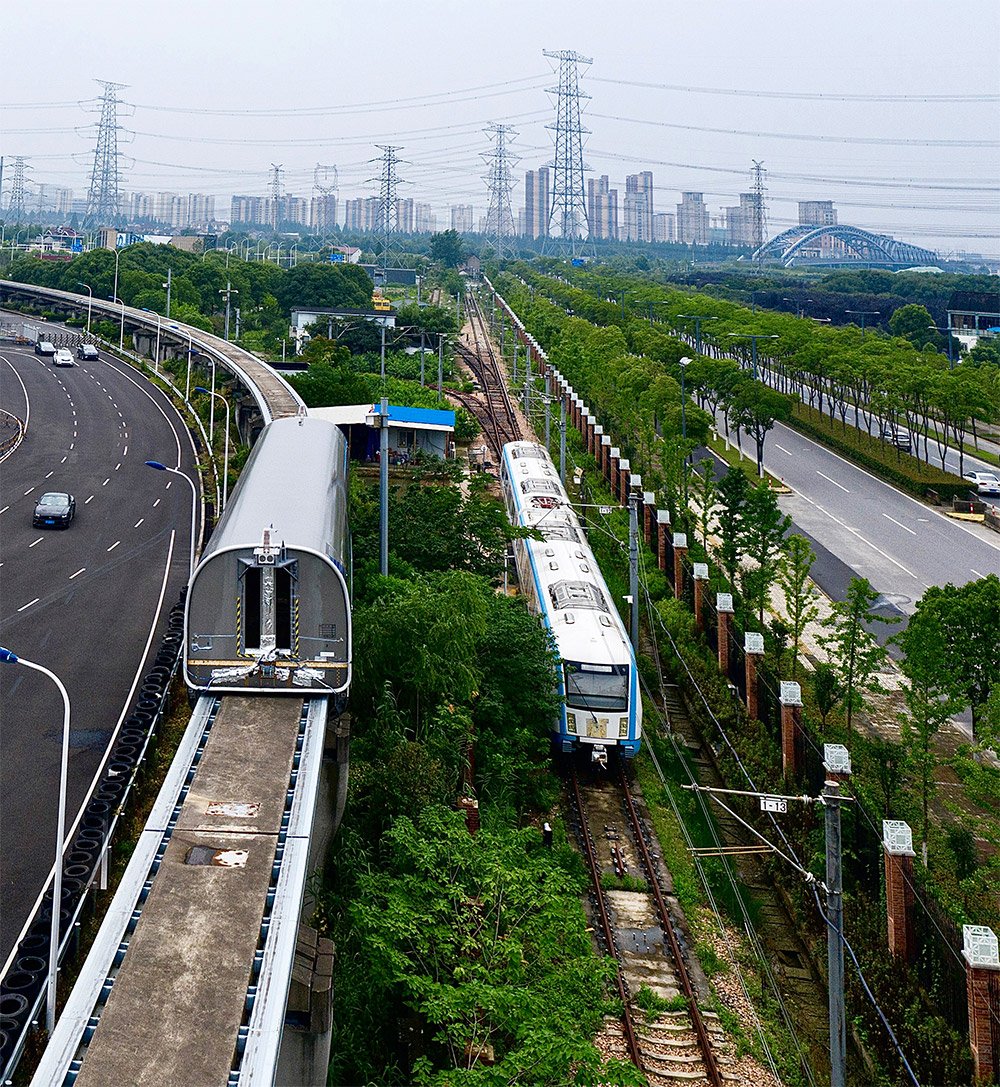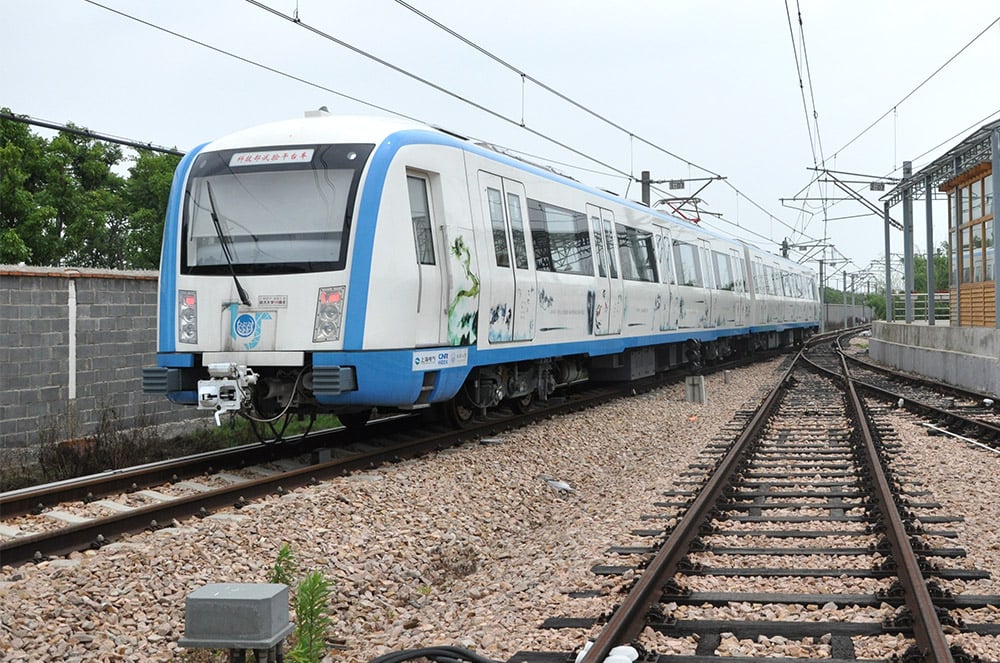Future rail transit: Fast, reliable and sustainable
Dr. Xiaohong Chen, is currently the Deputy Director of the Standing Committee of the People's Congress of Shanghai Jiading District (not resident), the Director of Maglev Transportation Engineering Research & Development Center and the President of the Institute of Rail Transit of Tongji University. She is also serving as the Director of the Traffic & Planning Design Institute of Tongji Architectural Design (Group) Co., Ltd. the tec.news staff recently had the honor to interview Dr. Chen and asked about the exciting new development of the rail transit in China.
After more than 20 years of rapid development, China's rail transit has reached a fairly large scale. As of January 2022, China's total railway mileage under operation amounted to more than 150,000 kilometers, of which the total mileage of high-speed railway under operation has exceeded 40,000 kilometers. A total of 51 cities have opened 270 urban rail transit lines entailing a mileage of 8,759 kilometers under operation. The rail transit will continue to develop rapidly.
Most notably, it will be mainly reflected in the following two areas:
First of all, the coverage of rail transit will be further expanded and deeply integrated into all kinds of human geographical environments, starting from areas with a high population density and a developed economy.
These trends have made higher demands on rail transit technologies.
- Increasing velocity
Rail transit needs to transport passengers and goods to the destination faster. Taking China's high-speed railway system as an example, it will gradually upgrade from the current CR350 platform with a base speed of 300 km/h to the CR450 platform reaching 400 km/h. At the same time, the maglev technology achieving the base speed of 600 km/h is now in the experimentation stage. - Enhance reliability
The rail transit system needs to adapt to more complex and challenging operating conditions, such as in extremely cold environments or regions with high altitudes. It should still maintain high stability in harsh geographical environments, and ensure safe and reliable braking performance when the speed increases. - Deeper integration
In order to effectively connect people in different human geographical environments, rail transit needs to organically integrate high-speed rail, inter-city, commuter and urban railway transportation products, and other products to form a comprehensive multi-network mode. - Sustainability
The rapid development and popularisation of rail transit covering more extensive areas will inevitably lead to the faster consumption of resources and the negative environmental impact. Therefore, green, energy-saving, economical and sustainable factors must also be considered in the development of rail transit technologies.
For example, in order to improve the carrying efficiency, it is necessary to further reduce the driving resistance of vehicles (wind resistance and track friction), reduce the weight of the vehicle body, optimise the efficiency of energy regenerative braking. Furthermore it is important organise trains flexibly and systematically to adapt to the supply-demand relationship of transport capacity in different sections.
In terms of the entire ecology and life cycle, the rail transit system has great scope for improvement, such as improving the integration, simplifying the system structure and reducing the overall number of components. It is also important to improve the service life of equipment by using more durable products and information-based predictive maintenance technology. Another important aim that serves sustainability is to recover and reuse the energy from vibration and airflow, which is generated when the vehicle is moving.
Technical requirements
It is well-known that the current development of rail transit technologies has involved many disciplines, including mechanical engineering, electrotechnology, software, control systems, aerodynamics, energy, environment, communication, electronics, materials, and so on.
With this background, it becomes important that the connectivity technology is able to connect and integrate products in different disciplines. It not only needs to carry and transmit electromechanical power and data signals efficiently and reliably, but can also empower rail transit in terms of speed, reliability, integration and sustainability – in other words, advance all the trends mentioned above.
In fact, the development of rail transit technology also brings new demands on the technical integration of related products.
Furthermore the focus of technical exchange among different roles in the industry, including end users, system integrators and system designers must gradually shift from the parameters and specifications to application scenarios. The application requirements of the front end should be known to the whole system and component suppliers, so that they can adapt to the development cycle of the industry and be more accessible to technologies during cooperative innovation.
This is also an important reason why Tongji University carries out all-round cooperation with HARTING in the field of rail transit technology. In the program, Tongji University and other scientific research institutions provide the basic facilities, such as test sites, vehicles, and laboratories, while HARTING and other product suppliers provide corresponding technical solutions. HARTING and Tongji jointly study, discuss and carry out tests in the technical fields according to the needs of the market and customers. They build an exchange and cooperation eco-system based on these activities. On top of that they cultivate and develop industry talents.
In addition, during the integration of rail transit systems, it is necessary to consider the reliability of the whole lifecycle of system components and products from R & D, manufacturing, supply and service in terms of the safety of industrial ecological operation.
Redefining connectivity
All in all, the fundamental mission of rail transit itself is making connections.
In the new era, rail transit needs to adapt to the more complex human geographical environment, taking into account flexibility, reliability and economic factors. It will not only be a transportation tool to connect different geographical locations, but also connect passengers in terms of information interaction during mobile travel. It will also connect personnel working together in the design, planning, management and use of rail transportation tools, as well as connecting the products, technologies, energy, materials and resources included in the rail transportation system during the sustainable development. The aim is the integration of all the respective components of society as a whole.


